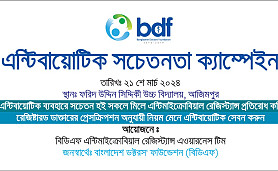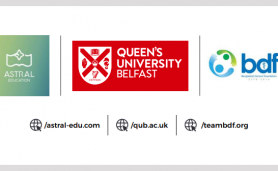Coronavirus exposes the deep divide in Bangladeshi society
Hospitals are struggling to cope and the humanitarian crisis is deepening as the South Asian country emerges from lockdown

As Bangladesh emerges from lockdown there are fears the pandemic will worsen
A small crowd of health workers greeted Badar Uddin Ahmed Kamran when his helicopter landed in Dhaka, the capital of Bangladesh, earlier this week. The former Mayor of the city of Sylhet and a notable member of the ruling party, was quickly whisked into a bed in the Combined Military Hospital — the country’s premier healthcare facility.
Only a handful of people who catch Covid-19 in Bangladesh can expect such treatment. Just a few miles away, the least fortunate victims of the virus lie motionless on the hot pavements.
In Bangladesh, a densely populated country of 170 million people, the Covid-19 pandemic has exposed the fault lines of the country's fragile healthcare system. With millions pushed into poverty by lockdown and an inadequate social safety net, the government sent its citizens back to work last week.
But as in other parts of South Asia Covid cases are soaring and the economy is yet to bounce back. Charities and individuals are stepping in to plug the gaps.
Large public gatherings are banned, and all Bangladeshis must wear masks when outside. The government has also since announced plans to introduce localised lockdowns in hotpots.
But the curve shows no hint of flattening. As of June 9, Bangladesh had recorded more than 68,000 cases of Covid-19. Researchers from the Directorate General of Health Services, Dhaka University and the University of Toronto predict by the end of the month that number could reach 123,000.
Testing is also very low. Only 10,000 samples are collected and processed each day but thousands more queue up outside the city’s designated testing hospitals, said Dr Shamin Talukdar, CEO of Eminence, a Bangladeshi public health research organization. Up to one in five tested in Dhaka are found positive.
The quality of testing, especially outside Dhaka, is questionable. “We don’t have proper training, a lot of false negatives are produced,” said Dr Talukdar.
He along with several other experts, believes the true case load could be much higher than the official toll suggests.
Accurate data about deaths is harder still to find. Officially just over 1,000 people have died from Covid-19 but even in normal times few deaths are registered.
The caretaker of Dhaka’s Azimpur graveyard dug almost double the number of graves over the last two months as normal. Only a handful out of the 50 burials he carries out each day are of people who officially died of Covid-19.
Banani graveyard, which caters to upmarket districts of Dhaka, used to receive only one or two bodies a day: for the last month or so this has risen to five. Covid-19
And Rayerbazar graveyard has been specially prepared for Covid burial. By the end of May, nearly 300 Covid patients had been buried there, according to the caretaker, but non-Covid burials have also risen by an average of 10 a day during the pandemic.

Dhaka's graveyards are reporting a rise in the number of burials
As Covid-19 cases rise, Bangladesh’s health system is buckling. State expenditure on healthcare is less than one per cent of GDP and what little investment there is “has been pushed into hard infrastructure projects, while soft infrastructure has been neglected”, said Fahmida Khatun, executive director of the Centre for Policy Dialogue, a Bangladeshi think tank.
This has created “a hollow healthcare system”: shiny hospital buildings that “would not look out of place in richer countries like Singapore or Thailand”, but which often “lack adequate equipment and properly trained staff”, she says.
The Covid-19 outbreak has exposed this void, said Dr Shahed Rafi Pavel, chairman of the Bangladesh Doctors' Foundation. The country has only a few thousand ventilators. There is also a shortage of intensive care beds with newspaper reports saying only 69 out of Dhaka’s 218 intensive care units are operational. The country also faces an oxygen supply crisis as worried Bangladeshis have stocked up on cylinders to use at home.
In many hospitals, junior doctors have been left in charge, abandoned by their superiors who are too scared to come to work, said Dr Talukdar. “They don’t know what they are doing. There’s been very little guidance on what protocols or treatment plans to follow or what drugs to use.”
After the first coronavirus case was detected on March 8, the government divided public hospitals into Covid and non-Covid. With the former lacking beds, many patients hid their symptoms to seek help in the latter, infecting healthcare staff, who lacked proper personal protective equipment, said Dr Pavel. Doctors and nurses started refusing to work.
On top of the health care emergency, Bangladesh is facing a deepening humanitarian crisis. Opening up the country as Covid-19 cases skyrocket, is “clearly a desperate attempt by the government to revive the economy”, said Ms Khatun.
External shocks caused by lockdowns around the globe have dealt a heavy blow: the country’s export earnings, which mostly come from the garment sector, were 83 per cent lower this April than last year, according to the Export Promotion Bureau.
Bangladesh’s own lockdown has left millions struggling to make a living or feed their families. According to a survey carried out by the Brac Institute for Governance and Development and the Power and Participation Research Centre, between February and April the number of households able to eat three meals a day fell by 24 per cent and 14 per cent in urban and rural areas respectively.
Identifying who needs help in the first place has posed yet another problem. The government’s existing safety net programmes mostly target the rural poor, said Asif Saleh, executive director of Brac, a Bangladeshi NGO.
When it comes to the cities, where the impact of lockdown hit harder and quicker, “there is a big blind spot”—one which Brac is working hard to fill, mapping slum communities to coordinate distribution efforts.
Across the healthcare and humanitarian response, NGOs are stepping up.
“We have to be pragmatic: hundreds of thousands of tests a day and expert contact tracing is not going to be possible in a country like ours,” said Mr Saleh. Brac is carrying out surveillance using informal community and pharmacy data, tracking increases in Covid-19 symptoms to help the government target its response.
Beyond surveillance and testing, the biggest struggle, according to Mr Saleh, is to get communities to see prevention measures as vital for their own health, rather than something imposed by the government. He, along with other civil society leaders, is pushing for a community-led response.

People in Chattogram receiving food aid from a local philanthropist
One such bottom-up intervention is led by the Hunger Project, a charity, whose vast network of youth volunteers and village development teams are raising awareness about hand washing, mask wearing and social distancing as well as teaching their communities to identify cases and to help people isolate.
There also been a surge in the number of fundraising and food drives from socially conscious citizens.
In the port city of Chattogram, Azizul Hakim has been providing a cooked meal to 600 people every day during Ramadan, with the aid of the local police force. A local philanthropist, Mr Hakim and his family have been doing this for several years but this year, “with the global pandemic raging” he increased the number of meals “to try and accommodate as many people as possible”.
“Middle income households” who could normally manage to pay for daily meals “are struggling to get by,” explained Mr Hakim, who received donations from people as far as away Manchester.
“We all need to play our part,” he said.
In Dinajpur, a rural district of Bangladesh, Mofazzal Hossain, a youth activist trained by the British charity, VSO, is striving to raise awareness about coronavirus in his community.
“The village people do not know what is going on. They have heard of corona, but they don’t know how it is spread or how to stop it,” he said.
Working with friends from VSO’s youth initiative, their network goes door to door to educate families about handwashing and social distancing, as well as creating videos and posting online.
Although full of passion, the young team is struggling. There has been no information campaign from central or local government, said Mr Hussain. Rumours are rife. Many in his community “think [corona] is only for rich people in cities”, he said. “Others believe it is a punishment from Allah”—a belief that many Imams in rural areas fuel.
The end of lockdown has added to confusion. Visiting his local market Mr Hussain noticed everyone saying the same thing: “The corona situation is well now, that’s why the government withdrew the lockdown.”
“Behavioural change takes time”, said Ashikur Rahman, senior economist at the Policy Research Institute of Bangladesh (PRI). “The government can make masks the law but if people wear them below their noses (as they do), because they know no better, what good does it do? I’m scared what will happen next.”
© TheTelegraph




